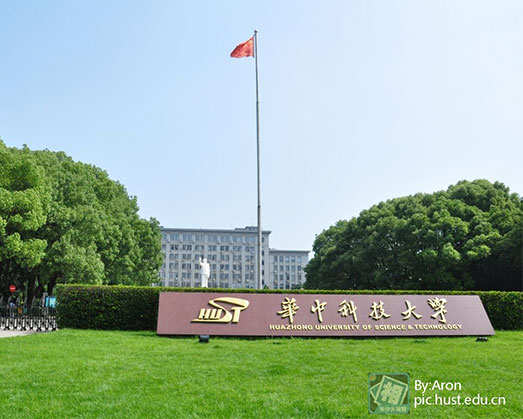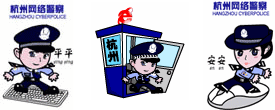The University of Science and Technology of China

The University of Science and Technology of China (USTC) is a prominent university in China and enjoys an excellent reputation worldwide. It was established by the Chinese Academy of Sciences (CAS) in 1958 in Beijing, as a strategic action by the Chinese government, to meet China’s science and technology needs and increases the country’s international competitiveness. CAS integrated its resources with USTC, with the aim of educating top talent in cutting-edge, interdisciplinary science and technology. The establishment of USTC was hailed as “a great event in the history of education and science of China”. In 1970, USTC moved to its current location in Hefei, the capital of Anhui Province.
From the start, USTC’s mission has been to “focus on frontier areas of science and technology and educate top leaders in science and technology for China and the world”. Central to its strategy has been the combination of education and research, as well as the emphasis on quality rather than quantity. Led by the most renowned Chinese scientists of the time, USTC set up a series of programs creatively encompassing frontier research and development of new technology. As a result, the university has taken the lead in higher education in China. USTC has accomplished several “firsts” in China. For example, USTC established the first graduate school in China, initiated the first class for gifted young people in China and built the first “big science facility” in China, the Hefei Synchrotron Radiation Facility.
USTC is one of the most important innovation centers in China. It is the only university in China operating two national labs: the National Synchrotron Radiation Laboratory and the Hefei National Laboratory for Physical Sciences at the Microscale. It also jointly operates two national “big science” facilities along with CAS institutes: the Experimental Advanced Superconducting Tokamak and the Steady High Magnetic Field of the High Magnetic Field Laboratory.
USTC is a world leader in fields like quantum manipulation, nanotechnology, high-temperature superconductivity, speech processing, fire science and life science. It is always ranked as one of the best universities in China. For example, USTC was ranked first among Chinese universities from 2008 to 2014 by Nature Publishing Index China. In addition, USTC attaches great importance to technology transfer and has incubated dozens of high-tech enterprises. Furthermore, it jointly built the Institute of Advanced Technology (IAT) with Hefei City in 2012, aiming to better promote the combination of education, research and industry. USTC-IAT focuses on fostering technological innovation and technology transfer in the IT industry, as well as microelectronics, health care, new energy, new materials and quantum information, etc.
USTC is regarded in China as the “Cradle of Scientific Elites”. Its educational principle emphasizes fundamental theories and provides students with a wide range of high-level training that incorporates newly emerging as well as interdisciplinary fields of study. The faculty-to-student ratio is one of the best among Chinese universities. Admission to USTC is extremely selective. Only the top 0.3-0.5 percent of high school graduates are admitted. Over 70 percent of undergraduate students are involved in the Research Program for Undergraduate Students in CAS research institutes or national labs on campus. USTC has the highest percentage of alumni, among Chinese universities, elected as members of CAS and the Chinese Academy of Engineering. Doctoral dissertations at USTC are frequently awarded the Hundred Annual Outstanding Dissertations Prize, which honors the top dissertations from Chinese universities.
Total enrollment for spring 2014 is about 14,600 students, of whom 7,300 are undergraduates, 4,500 are master’s students, and 2,800 are Ph.D. students. USTC has 1,600 faculty members, of whom 550 are professors. USTC has 15 degree-granting schools in the fields of physical sciences, life sciences, information science and technology, earth and space sciences, public affairs, nuclear science and technology, mathematical sciences, chemistry and material science, engineering science, computer science and technology, management, humanities and social science, environmental science and electro-optical technology, and software engineering, as well as a school for gifted youth.
USTC actively participates in international cooperation in various ways. It has engaged in joint research and educational activities with internationally acclaimed organizations such as the International Thermonuclear Experimental Reactor (ITER), the European Organization for Nuclear Research (CERN), the Max Planck Society, Oxford University, Heidelberg University, Stanford University, MIT, Princeton University, the University of California, Berkeley, and Yale University, etc. For example, it established a training program with ITER and initiated the SUM program, a summer camp for students and an academic forum for professors from Stanford University, USTC and MIT. USTC is also a member of several important international networks, including the Association of Pacific Rim Universities and the Association of East Asian Research Universities, etc. In 2013, USTC hosted the signing ceremony for the Hefei Statement, which USTC has actively promoted. The Hefei Statement is an agreement among the Association of American Universities (AAU), the C9 League (C9), a consortium of China’s top nine research universities, the Group of Eight (Go8), a coalition of Australia’s top universities, and the League of European Research Universities (LERU) to promote cooperation among world-class research universities.
News&Opinion
 more
more- OFFICIAL LAUNCH OF BFSU ACADEMY OF REGIONAL AND ...
- G20: Hangzhou wins world's attention
- How To Buy Happiness - The Investment Of Travel
- Goodbye, Rio; hello, China
- 2016 Yunnan-Thailand Education cooperation and e...
- Nice to meet you---你好中文!
- China sending largest-ever team to Rio
- Going to a top university ’no guarantee of getti...
Policy&Laws
How to Get one Job in China---Beijing policy
A foreigner, right, shows his job application form at a human resour...
Guilin to offer 72-hour visa-free stays
GUILIN - The city of Guilin in South China's Guangxi Zhuang autonomo...
further strengthening the visa regulation of int...
After the promulgation of new Immigration Control Act in China, Entr...





 print
print  email
email  Favorite
Favorite  Transtlate
Transtlate 








